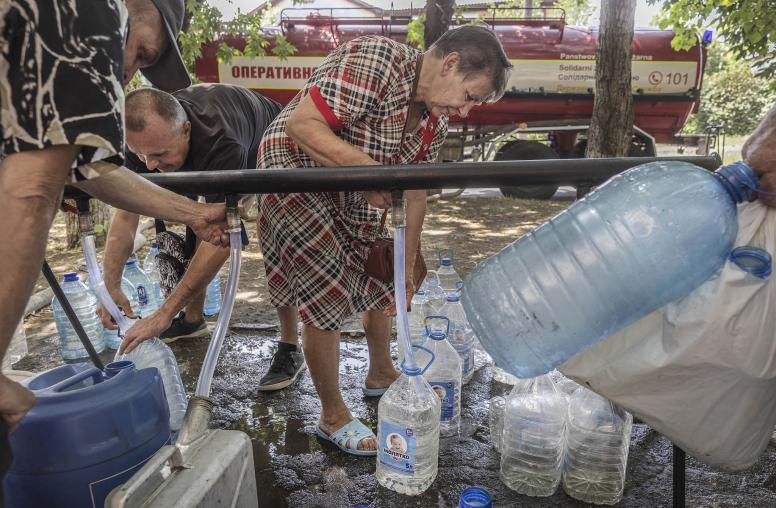Action, Not Words, Needed to Improve Ukraine's Investment Climate
Ukraine must not remain a country of great but unrealized potential. The International Monetary Fund package and other foreign assistance are helping stabilize Ukraine’s economy, but only an attractive business climate can result in the level of investment that will truly transform the country for the long term.
Ukraine has the makings of a prosperous and diversified economy. Even under the present difficult conditions, Ukraine’s agricultural exports are booming – and the potential for expansion is tremendous. With the right investment climate, Ukraine can become a major information technology hub. It can also become energy independent and perhaps an energy exporter. Favorable wage levels and a central geographic location make Ukraine a highly attractive location for manufactures of all types. The tourism, consumer products, transportation and financial sectors all have great promise.
But much work remains to be done. The World Bank put Ukraine at 83rd place among 189 countries surveyed in its Ease of Doing Business report for 2016. This is lower than Belarus (44) or even Kyrgyzstan (67).
Despite the EuroMaidan Revolution, Ukraine -- fairly or not -- is seen as about as corrupt as it was during the Viktor Yanukovych kleptocracy. Transparency International’s 2014 Corruption Perception Index put Ukraine at 142nd of 175 countries surveyed, compared with a 144 ranking in 2013.
Direct foreign investment has fallen since the Maidan events. Investors don’t like uncertainly and that is what the Russian annexation of Crimea and assault on Donbas have wrought. But investors also don’t like a business climate characterized by insider deals, bribes and selective justice. And much of that remains in place.
The U.S. State Department’s 2015 report on Ukraine’s investment climate observed that “in practice, the court system is viewed as ineffectual, corrupt and in dire need of reform.” The lack of a proper legal system in Ukraine is the major reason why the U.S. share of direct foreign investment in Ukraine was only 1.9 percent in 2014.
Judicial reform is thus essential -- now. This must include the vetting, requalifying and, as needed, firing of existing judges and prosecutors -- and the hiring of new people untainted by the corruption of the past. Salaries of those who remain must be significantly increased to ward off bribery.
A level playing field – founded on rule of law -- will allow investors to compete based on who has the best product or service, not on who has the best political connections needed to obtain government contracts or concessions. Many of Ukraine’s tycoons are not businessmen at all. Rather, they obtained their fortunes from insider deals arranged with political actors and use their wealth to perpetuate privileged access to the state budget. Their influence corrupts the political and economic system and must end.
Investment is a vote of confidence; that vote remains elusive today for Ukraine. By focusing on reforms that foster an attractive investment climate, Ukraine’s leaders can set the stage for an era of sustained growth. Actions not words are needed for Ukraine to reach the tipping point -- when investors let the funds flow.
William B. Taylor is executive vice president of the U.S. Institute of Peace and former U.S. Ambassador to Ukraine. Colin Cleary is a fellow at the United States Institute of Peace and former political counselor at the U.S. Embassy in Kyiv. The views expressed are those of the authors and not necessarily those of the U.S. government. The Russian version was published by Novoye Vremya. Reposted with permission from Kyiv Post. This article was first published on Nov. 18, 2015.



